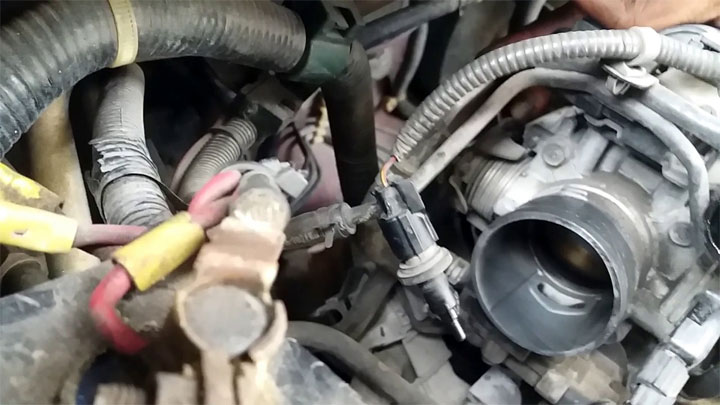P2138 Code (Symptoms, Causes, and How to Fix)
Engine systems once mechanical now rely on electronic throttle control for precision. The throttle plate adjusting air intake is dictated by computer signals rather than cables. While robust, electronic throttle systems do fail occasionally, setting codes like P2138.
This article will look at the possible causes of a P2138 code being stored, its seriousness, as well as the steps you should take to properly fix and clear this code.

Read Also: 10 Best Diesel Engines in the 21st Century
What Does Code P2138 Mean?
Diagnostic trouble code P2138 indicates that a vehicle’s electronic throttle body is not responding as anticipated to ECM/PCM input, as directed via a signal from the accelerator pedal position sensor. However, to understand the significance of this situation, one must first grasp the inner workings of “drive-by-wire” throttle delivery.
In the past, a driver’s input on the accelerator was transferred directly to an engine, via a throttle cable. This cable ran from the accelerator pedal itself to the engine’s throttle body. As the accelerator pedal was depressed, the throttle butterfly would open, allowing the introduction of air into the engine’s intake.
However, today’s vehicles forgo the use of a traditional throttle cable. Information regarding throttle input is now directly to a vehicle’s PCM/ECM through a wired connection.
This input is then used by the PCM/ECM to determine the appropriate signal to send to the engine’s electronic throttle body. This throttle body then opens/closes in response to such signals, in much the same way as once dictated by a throttle cable.
The occurrence of DTC P2138 means that a vehicle’s throttle plate is not orientated as it should be, in correlation to throttle demands made by a driver. This code is typically stored when a lack of correlation between a vehicle’s throttle position and accelerator position sensor is detected for more than two seconds at a time.
Related: DTC P0121, DTC P0122, DTC P0123, DTC P2101, DTC P2135
Symptoms of Code P2138

There are a number of symptoms that often accompany an active P2138 diagnostic trouble code. While the prevalence of such symptoms often varies on a case-by-case basis, several of these symptoms tend to be far more common than others.
The following are several of the most common symptoms associated with DTC P2138.
- Check engine light
- Electronic throttle control light
- Stalling at various RPM ranges
- Lack of throttle response
- Hesitation under acceleration
- Sudden loss of power/throttle response
- Rough or irregular idle
Causes of Code P2138

There are several potential causes of DTC P2138, some of which tend to be more common than others. The exact root cause of such issues can also vary based upon a number of variables, including the particular make and model of the vehicle in question.
The following are several of the most common causes of DTC P2138.
- Faulty throttle position sensor
- Damaged electronic throttle body
- Compromised throttle body wiring/connector
- Failing throttle pedal sensor
- Damaged throttle pedal sensor wiring/connector
- Bad ECM/PCM
Is Code P2138 Serious?
In almost every instance, diagnostic trouble code P2138 is to be considered serious in nature. This is due to the fact that DTC P2138 is associated with the working correlation between signals from a vehicle’s throttle pedal and throttle plate.
Simply put, this means that the throttle body of the affected vehicle is responding to input in a manner other than expected, which can ultimately lead to a somewhat unpredictable set of circumstances.
There are numerous drivability-related symptoms that commonly accompany DTC P2138. Any one of these symptoms has the potential to leave a motorist stranded, or worse, cause a vehicle to stall when traveling at highway speeds. This creates a hazardous set of circumstances that should not be taken lightly.
In any event, the root cause of DTC P2138 should be diagnosed and remedied at the first available opportunity. Doing so prevents further headaches, and mitigates much of the risk associated with driving a vehicle in this state.
If you do not feel comfortable diagnosing such an issue on your own, you should schedule an appointment at a trusted service center of your choice, on the first available date.
How to Fix A Code P2138

The following steps can be used as a general template when attempting to diagnose and remedy the root cause of diagnostic trouble code P2138. As always, one should always consult factory-specific service literature for their particular vehicle.
#1 – Check For Additional DTCs
Prior to beginning your diagnostic efforts, it is important to check for the presence of additional diagnostic trouble codes. The root cause of any additional codes that are present, should be fully diagnosed and remedied before continuing.
#2 – Check For TSBs
In the past, a number of manufacturers have released technical service bulletins detailing fixes for DTC P2138. This is especially true of many Chevrolet trucks/SUVs, which experienced severe issues of this nature in the past.
#3 – Visually Inspect Throttle Body
You will now visually inspect your vehicle’s throttle body/wiring, carefully checking for signs of frayed/pinched wires, or damage to pins at either side of the throttle body connector.
Attempt to identify any damage to the throttle body housing itself that may be present.
#4 – Relearn Throttle Body and Test
If no visual defect were located during step #3, you will now proceed by executing the throttle body relearn procedure for your particular vehicle.
This procedure can be found by accessing manufacturer-specific service literature for your car, truck, or SUV. Once completed, test drive your vehicle to see if DTC P2138 returns.
#5 – Check Voltage Sweep at Accelerator Pedal
If DTC P2138 returns, qualify the affected vehicle’s accelerator pedal using a multimeter. The vehicle’s accelerator connector should be back probed, and voltage readings should be recorded between the sensor’s signal circuit and the ground.
With the vehicle’s key in the “on” position, the signal voltage should smoothly fluctuate between .5 and 5.0 volts, as the accelerator pedal is gradually depressed. Replacement of this sensor will be necessary if signal readings fluctuate erratically.
#6 – Check Power at Throttle Motor
You will now back probe the power wire for your engine’s throttle motor. This wire will be present within the throttle body wiring connector.
Have an assistant lightly sweep the accelerator pedal, with the ignition in the “on” position. A fluctuation in voltage would indicate a faulty throttle body, while a lack of voltage would signify a ECM/PCM fault, or the existence of an “open” condition within the corresponding signal circuit.
- P0480 Code (Symptoms, Causes, and How to Fix) - Apr 19, 2024
- Car Temperature Gauge Stopped Working? (Here’s Why) - Apr 15, 2024
- Ignition Coil vs Coil Pack (What’s the Difference?) - Apr 8, 2024
